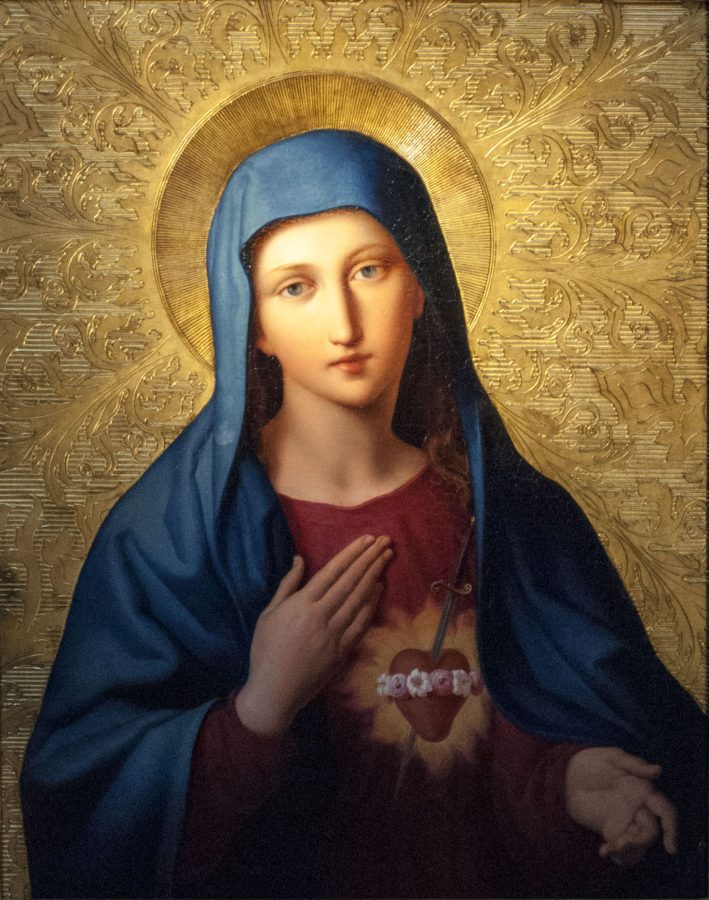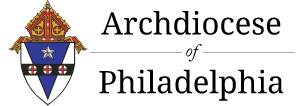In our sickness we need a Savior, in our wanderings a guide, in our blindness someone to show us the light, in our thirst the fountain of living water that quenches forever the thirst of those who drink from it. We dead people need life, we sheep need a shepherd, we children need a teacher, the whole world needs JESUS!
(St. Clement of Alexandria)

Immaculate Heart of Mary
Immaculate Heart of Mary in the Peterskirche, Vienna
ACT OF CONSECRATION TO THE IMMACULATE HEART OF MARY
…….We now turn to you and knock at the door of your heart. We are your beloved children. In every age you make yourself known to us, calling us to conversion. At this dark hour, help us and grant us your comfort. Say to us once more: “Am I not here, I who am your Mother?” You are able to untie the knots of our hearts and of our times. In you we place our trust. We are confident that, especially in moments of trial, you will not be deaf to our supplication and will come to our aid.
Pope Francis, Act of Consecration to the Immaculate Heart of Mary, March 25 2023, vatican.va
*************************************************************************************************************************
Heaven
“I am lost in the universe, but in God I find myself again,
and I cannot stray out of this ample bosom, outside of which is nothing.
Invisible arms support the horizon; I feel the life of my infinite God.
I understand that the “inaccessible” is close to us,
that “the inexorable” has a soul our own is akin: “ We are also His offspring.”
And so I am fearless when at evening I open my window on the gulf of darkness.
But how inhuman and how false the night would be if it did not speak to us of God!
It is not without importance at the foot of the Cross,
which reconciles all extremes, to notice how the heavens
—especially the heavens at night—are related to the mystery of the soul.”
(Heaven-What Jesus Saw from the Cross—A.G. Sertillanges; Pg 213-214)
***********************************************************************************************************************
What is the Liturgy of the Hours?
“Seven times a day I praise you.” – Psalm 118(119):164
The Lord has commanded us to pray without ceasing, and this is what the Hours help us do.
Morning Prayer – at the start of the day’s work and the coming of the light.
Daytime Prayer – at mid-morning, noon and in the afternoon, to unite us with the one for whom and through whom we are working.
Evening Prayer – at the end of the day’s work, to offer up what we have done.
Night Prayer – last thing at night, to commend our souls to God.
And finally, there is the magnificent Office of Readings, at whatever time of day is best for us to reflect on the mystery of salvation, with the help of Scripture and the writings of the Fathers of the Church.
“The purpose of the Divine Office is to sanctify the day and all human activity.” – Apostolic Constitution, Canticum Laudis.
The Liturgy of the Hours is the richest single prayer resource of the Christian Church, with prayers, psalms and readings for each of the Hours, changing each day and through the seasons.
But such riches come at a price. With more than a thousand different Hours every year, the books are thick and using them is complex. So complex that it is rare to find anyone reciting the Hours apart from the clergy and religious. Which is not as it should be. This treasure is too marvellous to be the exclusive possession of our servants:
“The Office is… the prayer not only of the clergy but of the whole People of God.” – Apostolic Constitution, Canticum Laudis.
Welcome to Universalis! What is the Liturgy of the Hours? Find out here.
About Today
Biographies and reflections: saints and feasts of the day from all over the world.
Readings at Mass
For each day and the week ahead. The texts are the ones used in the UK: the Jerusalem Bible and the Grail psalms. You can get more translations from the apps and programs.
Liturgy of the Hours
The prayer of the universal Church, seven times a day.
Office of Readings · Morning Prayer (Lauds) · Mid-Morning Prayer (Terce) · Midday Prayer (Sext) · Afternoon Prayer (None) · Evening Prayer (Vespers) · Night Prayer (Compline)
Contact
Sister Marie Faustina Wolniakowski, RSM
Delegate for Consecrated Life
222 North 17th Street
Philadelphia, PA 19103-1299
10th Floor Room 1029
Phone: 215-587-3795
Email: [email protected]






